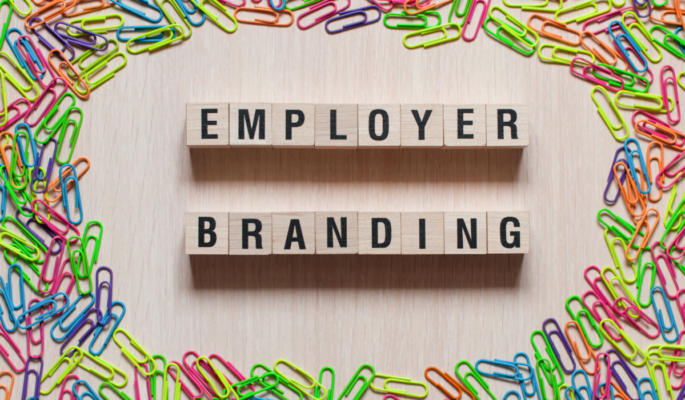How to Update Your Employer Brand to Win the War for Talent
The era of employment contracts, where a worker provides services purely in exchange for monetary compensation, is over. Modern employees aren’t looking for better pay when searching for a job.
Eighty-nine percent of employees desire a sense of purpose at work, according to a recent study by McKinsey titled Help Your Employees Find Purpose–Or Watch Them Leave.
Sixty-five percent of employees said the pandemic has made them rethink the place that work should have in their lives, and 56% said it made them want to find work that contributes more to society.
These days, monetary compensation is the bare minimum. Now, employees are looking for more work flexibility, deeper relationships, a strong sense of community, learning and development, purpose-driven work, and more in a job. Modern employees are looking for an organization that aligns with their values.
The Power of an Employer Brand
In today’s tight labor market, it’s more difficult than ever to attract top talent. That’s why employers across the country are adapting their hiring and recruiting strategies to engage the modern workforce–and appeal to their forever-changed tastes, attitudes, and behaviors.
One way employers are adapting is by updating their employer branding. Employer branding is how organizations market themselves to desired candidates—to compete for top talent.
It’s about showcasing what it’s like to work at your organization and sharing your value proposition with candidates at every hiring process step. It’s about articulating your mission, values, and culture to connect with skilled candidates who share your vision.
It’s how companies make retention-friendly, values-aligned hires that are more likely to stay. In that way, employer branding is critical to your bottom line. It can reduce turnover rates and cut your costs per hire in half, helping you save money.
Prior to the pandemic and the ensuing Great Resignation, employer brands centered largely around pay and benefits and what day-to-day life is like at the organization. But, those messages alone are no longer speaking to the modern workforce.
Employer Brand Refresh
Today, modern employees are looking for a values-aligned organization. They’re looking for purpose-driven work that keeps them engaged and prevents burnout. Many are prioritizing companies that are socially responsible or that provide opportunities for learning and development.
So, where to start? How do you update your employer brand (authentically) to connect with more candidates? How do you speak to the modern worker?
Follow the steps below to audit and update your employer brand to stay competitive in today’s labor market.
Step 1: Get clear on what makes you, you.
First, determine your organization’s unique value proposition. How do your products or services improve the lives of the people who use them? How are you solving problems for customers?
Next, define your organization’s mission statement, values, personality, best practices, and the other elements of your company culture that make you unique. Do your best to articulate the ways in which these things support your unique value proposition and business goals.
The project of employer branding is all about connecting your company values/culture back to your business goals–so you can more easily connect with skilled candidates who share your vision and are eager to be a part of your one-of-a-kind culture.
Step 2: Craft an Employee Value Proposition that fits the moment.
An employee value proposition (EVP) represents everything of value that an employer has to offer its employees in exchange for the skills and experience that employees bring. It speaks directly to candidates and current employees, and answers the question “why should I work for your company?” as well as “why should I stay at this company?”
Items such as pay, benefits, and career development are common, but employers should also highlight offerings that are currently in demand. That means, your EVP should now be spotlighting the things you know are important to modern employees, such as more work flexibility, social responsibility, purpose-driven work, and more.
Click here to see how best-in-class organizations are laying out their EVPs for candidates in this post-pandemic labor market. And, consider using data from market research and employee surveys to make data-driven changes to your employee value proposition.
Step 3: Distribute your work to build your employer brand.
Once you’ve done the hard behind-the-scenes work of messaging your organization’s unique value proposition, values/culture, and employee value proposition, it’s time to share it with the world.
Put it on your job descriptions, career page, social media profiles, acceptance and rejection letters, onboarding materials, internal communications, performance reviews, and more.
With one, consistent message around who you are, who you serve, and how you support your employees, you’ll build a stronger, more cohesive employer brand that’s more likely to attract the kind of employees you’re looking for.
More Ways to Win
For more ideas on how to bolster your employer brand to win the war for talent, tune in tomorrow for another episode of America Back to Work: Expert Interview Series.
We’re sitting down with Alex Genetti, Head of People at Enable, a global, collaborative rebate management platform that helps manufacturers, distributors, and retailers take control of their rebate programs and turn them into an engine for growth.
Through an extensive career in People Operations, Genetti has deep experience in managing every facet of the employee lifecycle, including designing and implementing employee onboarding programs, benefits and total compensation management, policy development, payroll management, HRIS configuration, and employee relations.
She’s sharing the inside scoop on what makes the modern employee tick and how companies can adapt to attract top talent in today’s tight labor market. Click here to listen to the episode wherever you get your podcasts.







